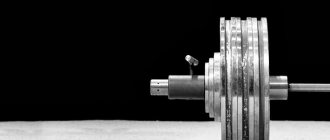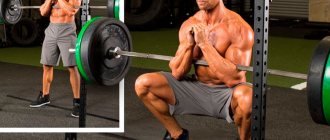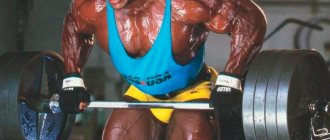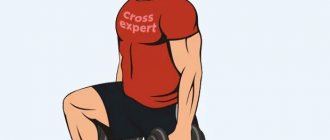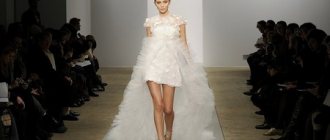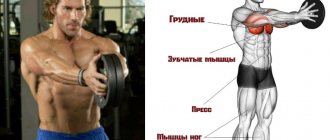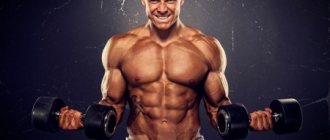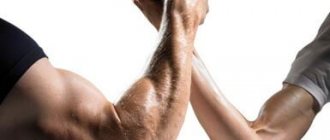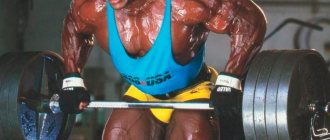Leg extension is a basic leg exercise with an isolating effect on the quadriceps muscles (front surface). It features a simple, effective principle of operation, suitable for both beginners and experienced users.
The trajectory and amplitude of movements allows you to focus the load on the quadriceps of the thighs and visually transforms the silhouette of the legs, making the muscles elastic, toned with a voluminous shape. Regular approaches strengthen the muscle corset, improve strength and endurance, and are also preventive preparation for performing more complex strength training.
Kneeling Leg Extension
This simple exercise is ideal for home workouts. All you need is some free space on the floor to kneel. The exercise can be hard on your joints, so gradually introduce it into your workout schedule and skip it if you feel pain in your knees while doing it.
Execution order:
- Kneel down so that your thighs are perpendicular to the floor. Use a mat or folded towel to protect your knees. Cross your arms over your chest.
- Without bending your hips, sit back and lower your buttocks toward your feet. Go back as far as your flexibility and knee condition allows.
- Return to the upright position and repeat.
- Make the exercise more difficult by holding the weight on your chest or raising your arms above your head.
What to replace it with?
If for some reason it is impossible to perform leg extensions while sitting in a machine, this exercise can be replaced with others. In order for the replacement to be more or less equivalent, their action should also be aimed at working the quadriceps femoris.
The alternatives are as follows:
- squats with weights;
- leg press;
- deadlift and others.
Some exercises can even be done at home, without going to the gym.
Leg extensions with dumbbells
For this exercise you will need dumbbells, a bench or a chair. Place a mat under your feet to prevent damage to the floor if your weight falls.
Execution order:
- Sit on a bench or chair with your knees level with the edge of the seat. Place a dumbbell between your feet and squeeze it tightly.
- Straighten your legs.
- You can make the exercise more difficult by using weights that need to be attached to your ankles.
- Using a low bench or chair will limit your range of motion.
Working with additional weights
When it comes to training your legs using additional weights, the first thing that comes to mind is the barbell squat. This exercise has become a universally recognized classic in the world of physical training. This became possible due to the high level of effectiveness of this exercise and the ease of its implementation. In addition, due to the fact that during its implementation several different parts of the body are involved, it allows for complex training. Also, many athletes resort to performing the previously mentioned lunges, taking additional load in the form of a barbell or dumbbells.
Standing leg extension on a traction machine
This exercise is not very intense, but you will definitely feel the impact on the target muscles.
Execution order:
- Place the cuff around your ankle and then attach it to the lower pulley cable. Stand with your back to the machine.
- Raise your leg so that your thigh is approximately at knee level. Lift the load. Use your arms for balance if necessary.
- Keep your knees straight, extend your leg and bend it again.
- Do the same number of repetitions on each leg.
Dead weight as an alternative
Quite often, in order to pump up their legs, novice athletes resort to training using the natural weight of their own body as a load. At first, this is quite enough to strengthen the musculoskeletal system and provide basic training for the muscles to move on to more complex exercises. Some of the most common techniques for using your own weight as a load on your legs include:
• Classic squats;
• Lunges alternately on each leg;
• Fixation in the “chair” position.
The big advantage of these techniques, in addition to increasing the volume of muscle tissue, is the opportunity to hone the correct technique for performing basic movements. This will play a big role as the athlete transitions to working with additional weights and will help eliminate the risk of serious injury.
Short Step Lunges
Lunges are a fantastic leg exercise. These can be upgraded to be more quariceps-targeted.
Execution order:
- Stand straight, feet together, arms at your sides. Look straight ahead.
- Take a big step forward.
- Bend your legs and lower the knee of your back leg to a height of a couple of centimeters from the floor.
- The front shin should be vertical. The hip of the back leg should also be in a vertical position.
- Push off with your front foot and return to the starting position.
Simply shorten your stride to increase quadriceps activation. The modified exercise can be performed with or without weights. This lunge technique is especially effective when combined with blood flow restriction training. However, this increases stress on the anterior knee joint, so avoid this exercise if you suffer from knee pain.
Recommendations for implementation
For all its ease, hip extension in the simulator has some subtleties.
The main goal of the exercise is to load the quadriceps as isolated as possible.
The front of the thigh has four muscle heads. There is a strong belief among bodybuilders that with the help of certain actions it is possible to redirect the load on specific muscle bundles.
Therefore, there are three positions of the feet when performing the leg extension exercise on a block:
- Toes outward – the inner medial head is more activated (the so-called “teardrop” that hangs over the knee)
- Toes inward - the load shifts to the outer lateral head
- Socks parallel to each other - even distribution of the load on the entire quadriceps
Another important aspect for increasing the effectiveness of the exercise is the tempo of the movement. The best results are achieved with a 1-2-2 scheme.
This means lifting the weight upward for one second, followed by two seconds of fixation at the top point with the muscle as tense as possible. Then for two seconds the projectile is lowered down to the starting position.
Sissy squats
This is a very challenging squat and is great for the quads but can be hard on the knees.
Execution order:
- Stand sideways to the support, holding hands with your hands.
- Bring your feet together. Bend your knees slightly, lifting your heels off the floor. Tilt the body back. This is the starting position.
- From this position, squat on your toes, pushing your knees forward and leaning your body back. The body and hips should form a straight line.
- Lower yourself as far as you can and hold the position for a few seconds and return to the starting position.
Probable mistakes and useful recommendations from professionals
Most beginner athletes rely on their intuition when performing all kinds of exercises. Therefore, they end up making many mistakes that could have been avoided by listening to the recommendations of professionals.
Common mistakes when doing leg extensions in a machine from a sitting position:
- sudden movements - when extending the legs in a sitting machine, you need to make smooth movements, jerks can lead to injuries;
- incorrect setting of basic parameters on the simulator;
- lack of preliminary warm-up, which is required to warm up the muscles and prepare them for the upcoming loads;
- non-static body position.
It is important to adhere to the following recommendations from professionals:
- legs must be bent at right angles;
- if you place your shins and feet under the bench at the start, this can lead to joint injuries;
- your back must be kept straight throughout the entire exercise;
- when lowering your legs, you should not linger for a long time at the minimum point, it is believed that this leads to overload of the quadriceps femoris muscle;
- when you reach the highest point, you need to pause for a couple of seconds, tense your socks and pull them towards you;
- your knees should be placed on the edge of the seat, they should not hang beyond it;
- it is important to sit steadily on the machine when extending your legs, and not to squirm;
- correct breathing technique also affects the final result;
- it is preferable for beginners to do leg extensions after the main workout, and professionals can use this exercise as a warm-up;
- If during leg extensions you feel pain or discomfort in the muscles or ligaments, the exercise should be stopped.
Only by adhering to the above recommendations can you count on maximum results and always be in excellent athletic shape.
On a note! After each workout, it is necessary to do intervals of at least two days. This time is enough for the muscles to rest and recover. If you neglect this recommendation, you can get injured in the form of sprains and tears.
What muscles work
What muscle groups work when extending the legs in a supine position? Their function is to tighten the joints in the knee area.
This forces the use of the following muscle classes:
- Biceps - located on the outer half of the posterior femoral surface, in other words, on the biceps.
- Semimembranosus - the inner area behind the thigh.
- Semitendinosus - occupies the inner plane of the posterior thighs, above the membranosus muscle.
- Gastrocnemius - the top and middle surface of the lower leg at the back.
The upper torso muscles (bottom and middle trapezius, as well as the serratus anterior muscles) act as stabilizers.
If you regularly train, you can get a beautiful body contour, the proportions will visually look aesthetically pleasing (especially important for back surfaces), and the chance of getting bruises in other fitness categories is reduced.
Working muscles
The simulator is designed in such a way that the main load is taken by the quadriceps femoris muscle. She is also a quadriceps. The muscle extends the lower leg, brings the thigh forward, and flexes the hip joint.
Specifically, in the version with a simulator, stabilization of the body and other additional aspects are not needed. If we are talking about using the arms and abs, this is unnecessary.
This exercise works all 4 heads of the quadriceps:
- Straight line – extension starts, this is the muscle that covers the thigh in front;
- Intermediate – stabilizes the leg and adjusts the hip joint, it is located under the straight line;
- Lateral - to use it, the socks are pulled apart, the muscle itself encircles the thigh on the side;
- Medial - to activate it to a greater extent, the socks are directed inward
Calf extensions are not a strength exercise. If they work in a simulator, their goal is to strengthen the front surface of the thigh and “pump up” lagging muscles. This movement helps improve the classic deadlift, as well as the squat, front squat, snatch, clean and press, and leg press.
Protruding buttocks[edit | edit code]
| Source: Fitness for Beginners . Manual, 3rd ed. Author: Liz Neporent, 2017 |
The most popular exercise for the biceps femoris (back of the thighs) is probably the leg curl. Unfortunately, doing it incorrectly is also very common. Generally speaking, when bending your legs, your buttocks should not stick out upward (of course, unless you are doing a “dog” exercise according to the yoga system). A sticking out butt during push-ups indicates that you're relying more on your legs than your abs to stabilize your torso. In the case of training on a special simulator, protruding buttocks mean that you have not isolated the necessary muscle group.
Incorrect use of the leg curl machine[edit | edit code]
Proper use of the leg curl machine.
Don't let your butt stick out over the support pad of the machine. Watch people who use the lying leg curl machine. You will see that during the exercise, the hips of many of them rise slightly above the support pad of the machine, and the buttocks stick out a few centimeters. Of course, such a mistake is insignificant, but it can insidiously interfere with your goals. Indeed, in this case, it is not the biceps femoris muscles that work, but the gluteal muscles, so your hips do not become stronger in any way (photo A in the figure).
Proper use of the leg curl machine[edit | edit code]
It is not that difficult to prevent your buttocks from rising above the exercise pad. To do this, lift your upper thighs literally a couple of millimeters before starting the exercise. By bending your knees from this position, you will feel much more stress on the biceps femoris muscles (photo B in the figure).
Variations
If you want variety and are ready to give it your all, we have prepared several additional exercises. There are no crunches among them and you do not need additional equipment. We will show how prisoners added variety to their training with classic exercises, blood and sweat.
Kneeling Jump
This is a great explosive exercise for the hip flexors. Many abdominal exercises develop muscles and strength, but they are performed at an unnatural rhythm for a person. Such exercises will have no effect on speed or power, but jumping from a kneeling position is a different matter. By combining this variation with a bridge and keeping the hip flexors flexible, the muscles will not lose speed and you will avoid the strain that many athletes commonly experience.
Begin the exercise by taking a kneeling position, squatting on your shins and toes. Explosively lift your knees and land on your feet.
Features of the exercise
Leg bending in a lying down machine, or alternatively, sitting and standing (there are also such machines) is one of the most popular exercises in both women's and men's lower body training. This is explained, firstly, by the ease of mastering the technical side of the movement, and secondly, by the opportunity to qualitatively work out the target muscles.
By the way, about muscles. The target muscles when performing calf curls will be:
- Biceps femoris or biceps muscle. It bears the main load.
- Semitendinosus and semimembranosus muscles. They are located closer to the inside of the leg. Just like the biceps femoris, these muscles bend the leg at the knee joint.
- The calf muscles are additionally involved in the work.
Load distribution: biceps femoris, semimembranosus, semitendinosus and gastrocnemius muscles.
As for the place of this exercise in training, it is usually performed, like leg extension, after basic exercises for the legs and buttocks, in particular, after squats or deadlifts. The number of sets and repetitions may vary depending on your goals. As a rule, this is 3-4 approaches of 15-20 times.
- Girls perform this exercise in multiple repetitions with light weight. This approach works for fat burning, allows you to increase muscle tone and draw relief.
- Men do fewer repetitions, but with heavier weight. Thus, the hamstrings increase in volume and muscle strength increases. And this, in turn, not only adds mass to the legs, but also provides significant support when performing basic exercises.
With the correct technique, leg curls on the machine are quite safe and are recommended even for beginners. However, if you have had injuries to your knees or lower spine, be careful.
Classic version of the exercise: in a lying position.
Leg bending while sitting and lying down is practically no different in effect. Choose the position that is most comfortable for you. Doing leg curls while sitting will make it easier for you to breathe because your chest won't be compressed, and lying down will make it easier to control the range of motion of the weight. Also, some athletes do bending alternately with one and the other leg while standing in a special machine. This allows you to better feel the hamstrings. There are many variations and you can always replace one with another.
Bending the legs on the machine while standing.
If you don’t have a simulator at all, you can replace this exercise with leg curls with dumbbells held between your feet. In this case, you lie down on the bench with your stomach.
TYPES OF LEG BENDING
Standing leg curl
Perfectly works the very bottom of the back of the thigh and the top of the calf muscle.
The body should be slightly tilted forward, the leg lifts to the point where the shin is slightly above parallel to the floor (but the roller does not touch the body), at the lower point the leg is slightly bent to maintain the load
It is important that if your body leans back when lifting, reduce the weight and do the exercise with perfect form.
Leg bending while sitting in a machine
To begin, adjust the machine to the length of your hips and height; your knees should not go beyond the bench.
The lower back and center of the back are pressed tightly against the back, lower the bolsters so that your shins at the lowest point are strictly parallel to the floor, do not place them behind the machine.
